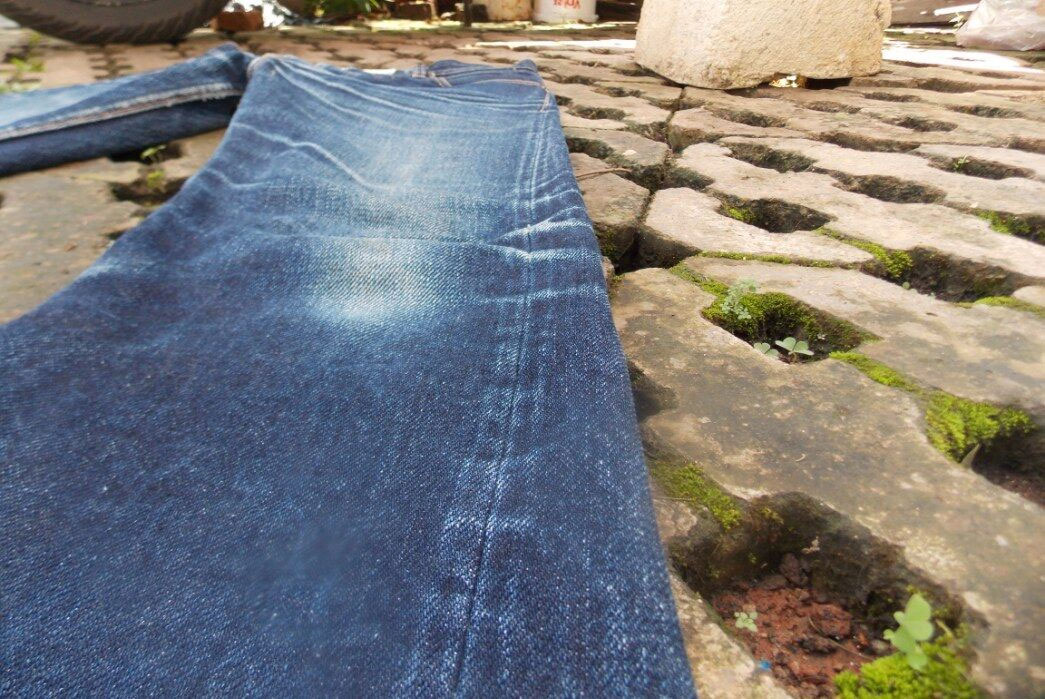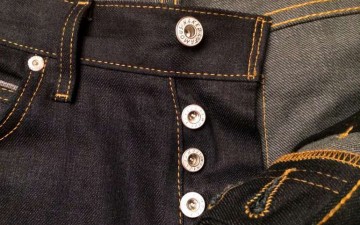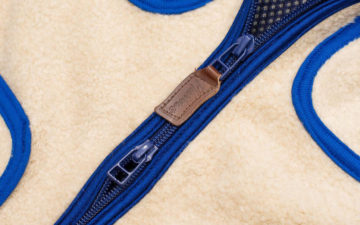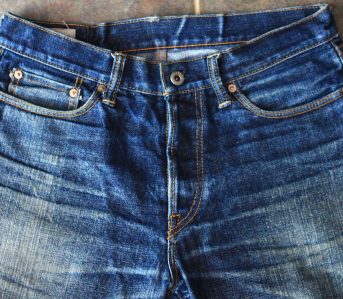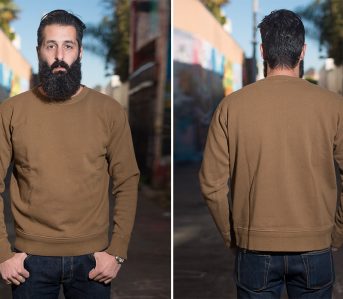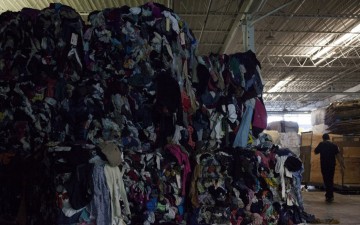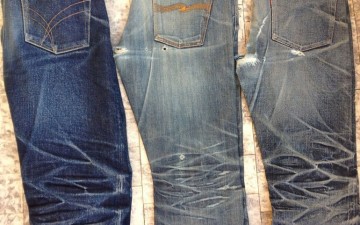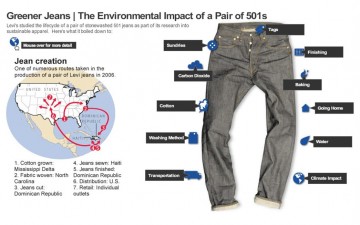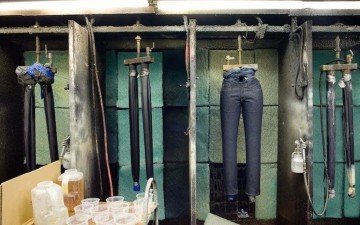Levi’s estimates that a pair of their 501 jeans uses 3,781 liters of fresh water over the course of its life. For reference, that’s enough to soak them in a completely full bathtub over 30 times. You can break down pretty much anything produced in our economy in terms of the water needed to produce it. A cup of coffee is about 55 gallons (mostly to grow the beans), a cheeseburger uses 660, and a roundtrip economy flight from LA to New York is a little over 5,000.
A single pound of cotton takes about 100 gallons of water and the average American throws away 65 pounds of clothing every year.
Energy and agriculture are often the first areas mentioned when it comes to our environmental impact, but the clothing we wear has an undeniable effect on the world we live in. Fresh water is becoming a scarcer and scarcer resource the more people there are on the planet to use it.
While larger governmental policy decisions are extremely important, there are a host of everyday things we all can do to reduce our own impact. The raw denim/heritage/vintage style is already one of the most environmentally friendly around, so many of the below may seem obvious if you’ve been in this for a while. One of the biggest complaints I hear against going green is that it’s too expensive, but here are nearly a dozen ways that it’s not only more environmentally friendly but also cheaper to go green.
1. Don’t Buy Pre-Distressed

Denim is predistressed by hand and machine to give it a “lived in” look.
Environmentally speaking, what we’re looking for in our clothing is utility value. Basically, how much use you can get out of a thing divided by the amount of resources it took to create it. Alden shell cordovan boots, for example, might use twice the resources in terms of leather, cork, metal, and time in production as a pair of Cole Haan’s you’d buy at the mall, but the Alden’s will last you ten times as long. For proof, see my dad’s cordovan Aldens he bought in 1982 and still wears today.
Your utility value can be increased either by minimizing resources the resources used to make your items or maximizing how much you use them. The easiest way to increase the latter is to buy items that are as hardy and durable as possible. This means clothes that haven’t been “pre-worn” by lasers, enzyme washes, and sandblasting. Pre-distressed (or as William Gibson put it “pre-digested“) garments by definition can’t be worn as long or as hard as ones haven’t had their lives tortured away before you ever even put them on.
Besides decreasing the usefulness of a garment, distressing also uses even more resources and creates even more pollutants to break down the clothes before they’re ever even worn. This cycle is asinine! Stop it by only buying new clothes that are actually new and not pre-chewed by machines.
2. Repair Don’t Replace
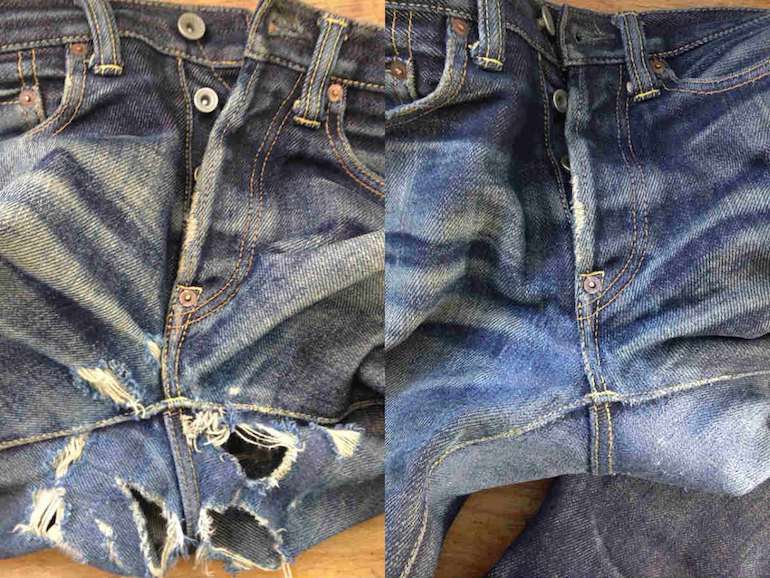
Denim repairs by Rain Delisle of Indigoproof.
The best way to extend the life of your clothing is to not let it die. Some of our readers have patched, darned, and mended their jeans dozens of times to keep them alive for years of continuous wear. I have a pair of LVC jeans that I’ve repaired the crotch eight times alone.
Aside from your local tailor, there are many reputable repair shops you can send your jeans to all over the country for nearly seamless repairs. But the best way is often to do it yourself; you can find a used sewing machine on Craigslist or eBay for under fifty bucks and with our guide to DIY repairs, have whatever item you need mended at any time.
So get your jeans restitched, put a new sole on your shoes, and rewax that jacket. It ain’t over ’til you’ve wrung out every last penny and ounce of natural resources. Of course, if you’re desperate to get that worn in look, you might be in the market to…
3. Buy Used and Vintage
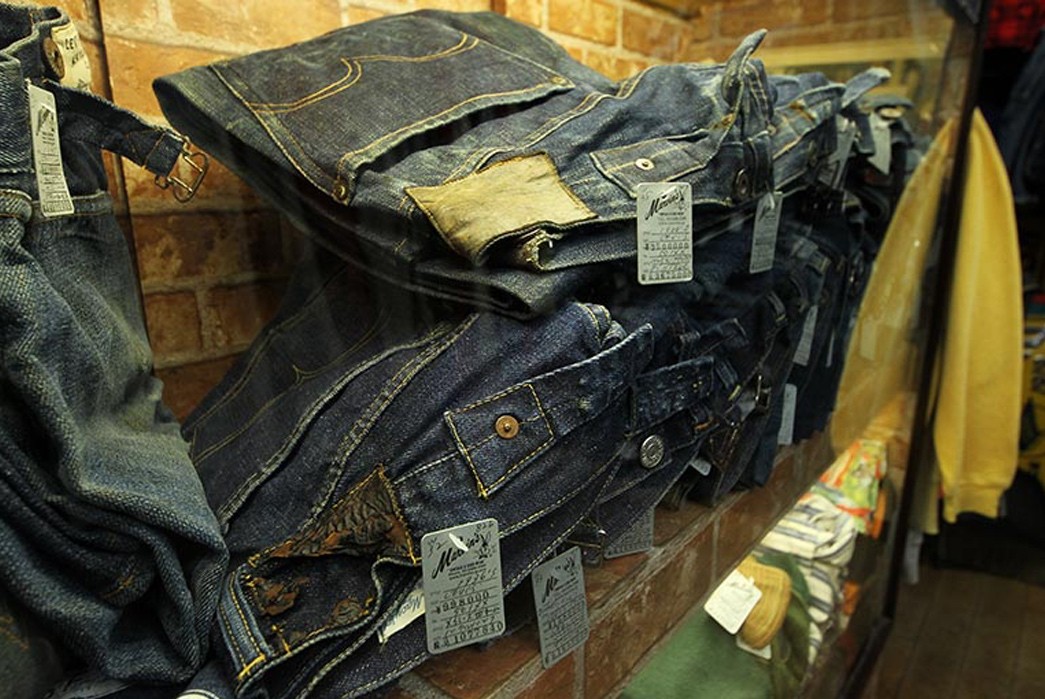
Vintage denim at Marvin’s in Tokyo.
We all know the economic principle of supply and demand–the more demand for a product, the greater the supply will grow to match it. For example, when you buy a new pair of boots from Red Wing, Red Wing gets the message and the money from your purchase and goes, “Hey, we should make another pair to replace the one that just sold!” which perpetuates the endless cycle of production and consumption.
Do you know what breaks that cycle? Buying used! Once an item is out of the sales reach of the company that made it, they have no reason to (and oftentimes can’t) create another. Used and vintage clothes have already squared their existential debt with the manufacturer, so you can buy as much as you want with a relatively clean conscience. And except in the case of collector’s pieces, secondhand pieces are often much, much cheaper than what you’d buy new.
If your tastes expand beyond the local thrift store, check out websites like eBay, Grailed, and a variety of vintage stores that allow you to shop from decades and centuries past.
4. Wash Your Clothes Less
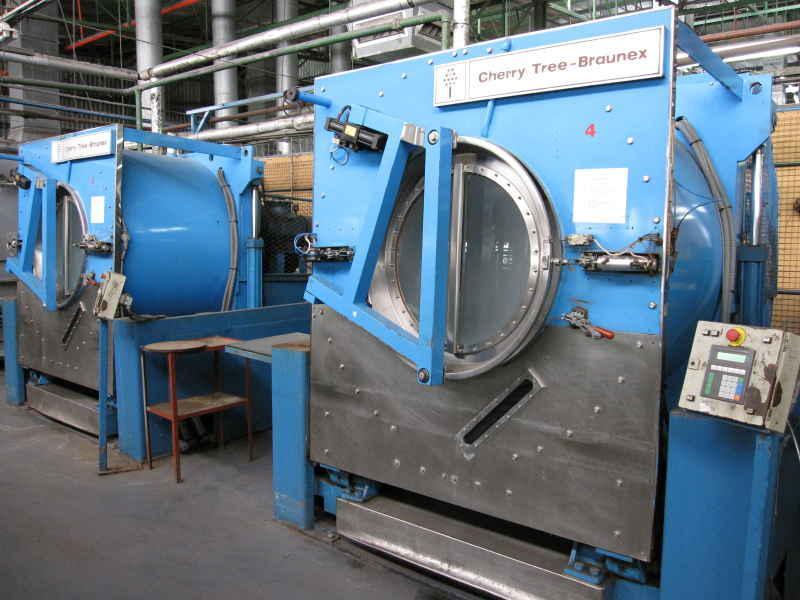
Even the most efficient washing machines use about 15 gallons of water per cycle. The average top-loading washing machine can use up to 45. Think about those half to one and half full bathtubs swirling down the drain every time you consider doing a load. You’re not procrastinating, you’re helping the planet, and you’re saving yourself money!
In the raw denim community it’s often a smelly badge of honor to go as long as possible without washing your pants. Not saying you should take the Ruedi Karrer challenge and wear your jeans every day for years without washing, but he’s a great role model! When it does come time to give your clothes the dip (see our signs it’s time), check out our in depth guide on how to wash your jeans.
5. Wash Your Clothes with Natural Detergents
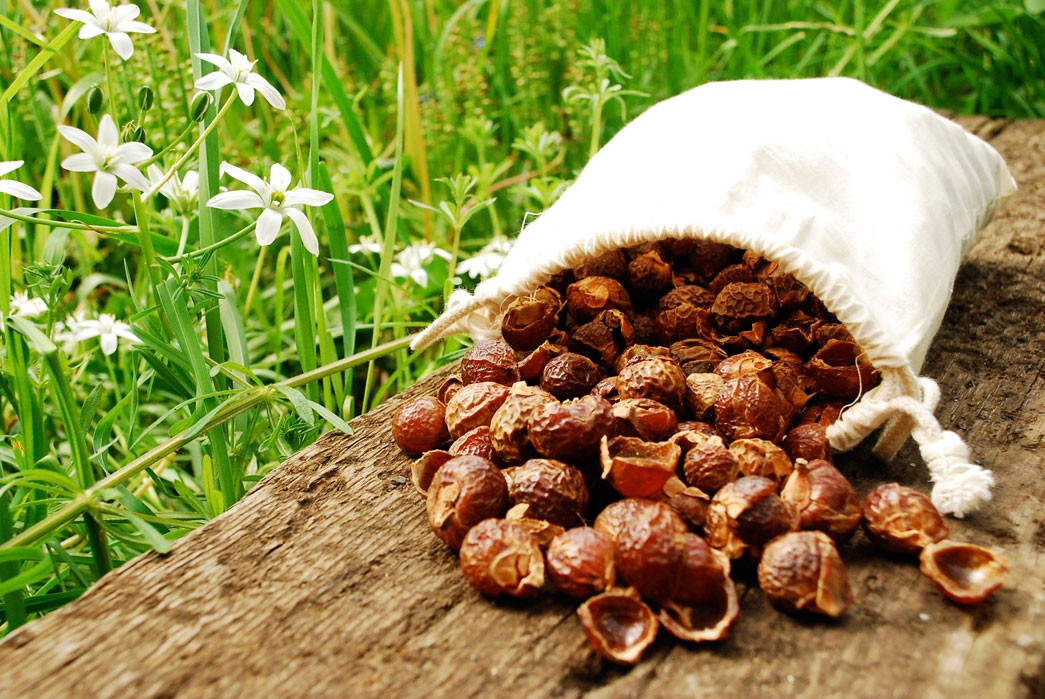
When you do suds your duds, try to find a soap that’s as minimally impactful as possible. That bottle of Tide and that box of Borax didn’t come wellspring and fully formed out of the earth. Phosphorous minerals and petrochemicals make up those scrubbing bubbles, which not only take more water produce, but they are often more polluting and harder to process out of our water treatment centers. Even the containers they come in are often non-biodegradable and non-recyclable. With standard detergents, it’s lose, lose, lose all the way down.
Instead, have a look at the organic options like Tide Purclean, Mrs. Meyers, and Seventh Generation. Or if you really wanna be clean about getting clean, check out soap nuts (read our review), which are 100% organic and unprocessed sudsing berries that are easy on your clothes and you can use them over and over and over again. A half pound of these puppies will set you back $12 and last you 120 loads, whereas $12 of conventional Tide only gets you 64 loads! Using a natural is cheaper, better for your clothes, and better for the environment. Why would you ever buy conventional laundry detergent again?
6. Wash Your Clothes by Hand
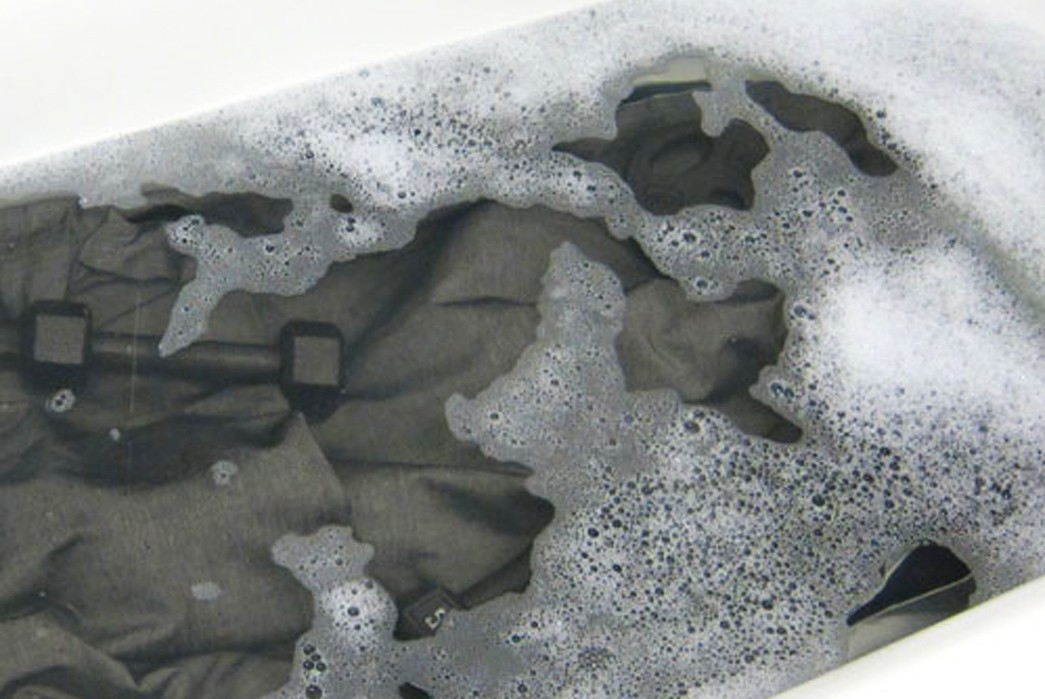
Most washing machines have a cycle on them called “hand wash”, it’s usually the most delicate setting and the one that’s easiest on your clothes. Going easy on your clothes means they will last longer, which as mentioned above, is what we all want. Do you know what’s even gentler on your clothes than the hand wash cycle–actually washing your clothes by hand!
Washing a load by hand in the tub, sink, or dedicated wash basin is the nicest thing you can do for your clothes, plus it uses less water and infinitely less electricity. Sure, it takes a little longer, but if you’re not up for spending some quality time with your clothing, I don’t know why you’re on this site in the first place…
7. Hang Dry Your Clothes
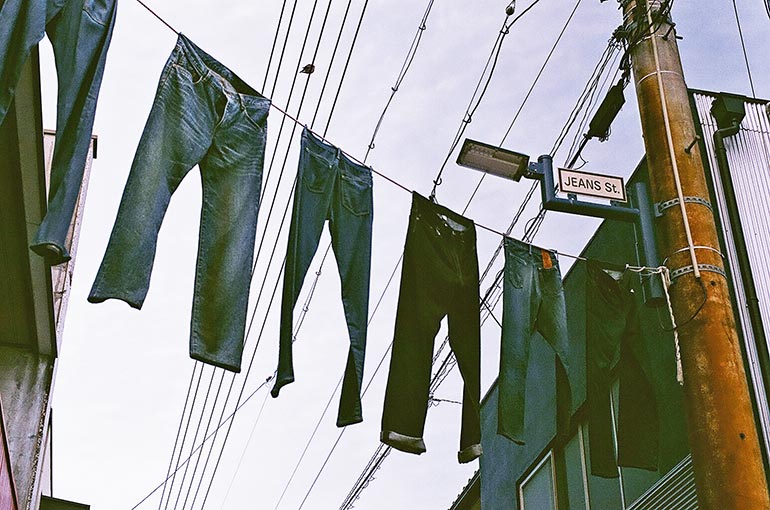
Jeans hanging in Okayama’s Jeans Street.
Remember when I said that the average American throws away 65 pounds of cotton per year? Open up the lint trap in your dryer and you’ll find some hard (or rather soft and fluffy) evidence of it. The hot tumble dance of a dryer is quite possibly the most damaging thing you can do to your clothing and that lint is your clothing being ever so slowly being ground away into nothing.
Clothes dryers also use more electricity than almost any other appliance. The average dryer uses about 3.3 kilowatt hours for just one cycle–that’s enough to fully charge an iPhone everyday for a year. It’s also expensive, that much electricity will run you about 36 cents. The average American household does 7.5 laundry loads per week, so that adds up to over $140 per year–enough to buy a new pair of jeans to feed to your washer.
Clothesline or air drying is the only way we advocate to dry raw denim, but it’s the best way to dry everything else as well. It does minimal damage to your clothes, the environment, and once you buy string and some pins, it’s basically free…I also think they smell better.
8. Buy Locally Sourced Clothing
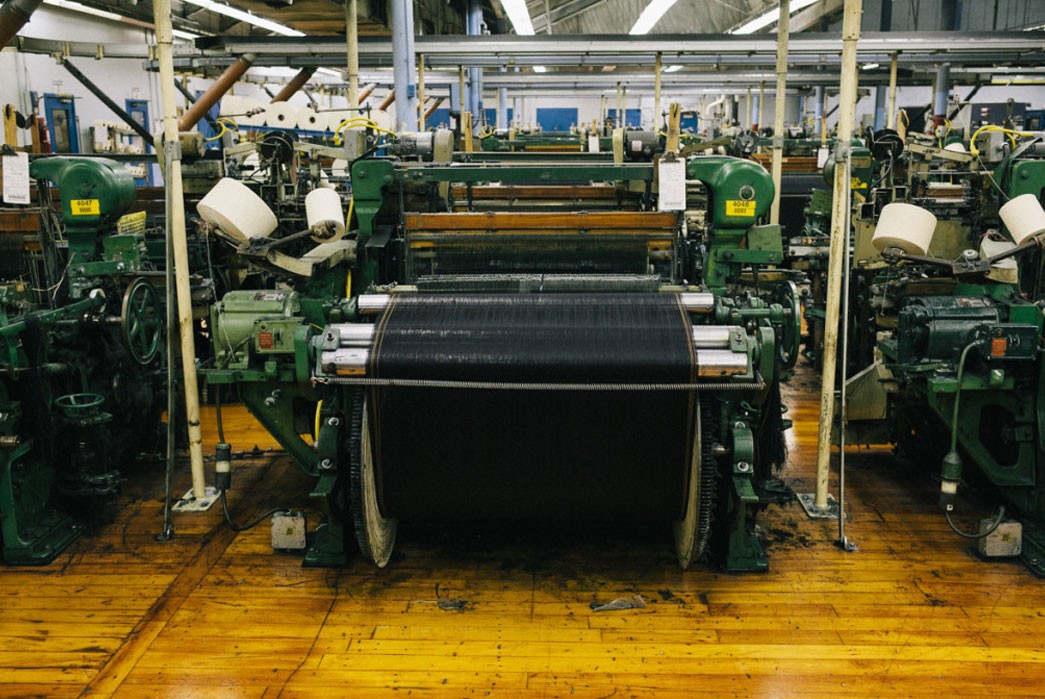
Inside Cone Mills White Oak plant in North Carolina.
The most costly environmental effect of clothing production sometimes isn’t making the item itself, it’s transportation. As mentioned above, a cross-country plane flight is one of the more resource expensive things you can do. While a piece of clothing usually takes up way less space than a person (and it’s probably taking a boat), when the cotton in it is grown in India, spun into yarn in Turkey, milled into fabric in China, sewn into a garment in Egypt, and sold at a mall in Arizona, the impact of its travel adds up.
Compare that to a pair of jeans from brand Raleigh Denim, whose cotton is grown in North Carolina, then woven into fabric in North Carolina, and then cut and sewn in North Carolina–notice a pattern? And unless they’re driving all over the state in a busted single-digit-mpg pickup truck, nearly all of the energy that went into that pair of pants went directly into creating them and not into filling up their passport.
A pair of Raleigh Denim, however, costs about $300 whereas the globetrotters may land closer to $30. In this instance, the local buy is probably going to cost more money than the one from a distant land, but that cost difference is often abrogated by our next point…
9. Buy Less But Better Clothing
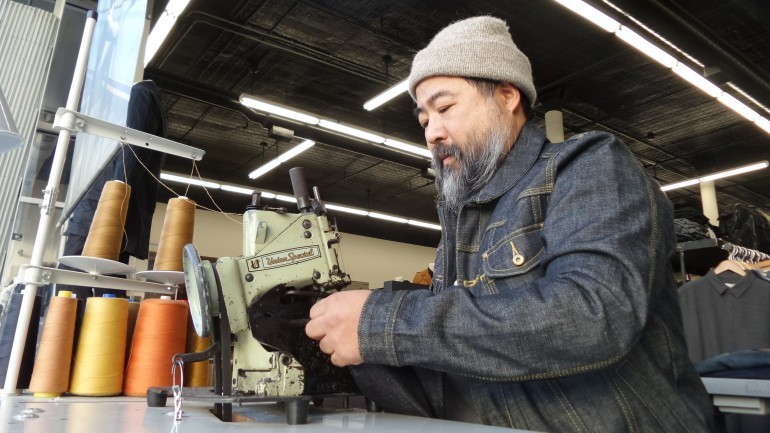
Mildblend Supply Co. owner Luke Cho hems a pair of jeans.
Before I fell into this wacky, weird, and wonderful world of raw denim, I had an annual ritual. Every fall, I would go to the mall and I would buy four pairs of Levi’s (two 514s, a 511, and a side of 505 was my standard order) then I’d either Goodwill or toss last year’s crop depending on how shredded they were. One fall, however, I decided to spend my $200 of jean money on a single pair of 3sixteen SL-100s instead. I was a little trepadacious at first, I had literally put all my eggs in a single denim basket.
I wore those jeans nearly everyday for a year, and then I repaired them and kept wearing them. It’s five years now and I still wear them occasionally. I’ll never toss or Goodwill them. Although my initial investment on the pair was much higher than my mall Levi’s, my cost per wear ended up being much lower. The mall jeans cost around $50 and I wore each pair about 80 times, that makes for a cost of about 62 cents for every time I wore them. My 3sixteens cost $215 and I’ve worn them well over 400 times, that’s a little less than 54 cents for every wear – ten percent cheaper than the mall and getting cheaper every day.
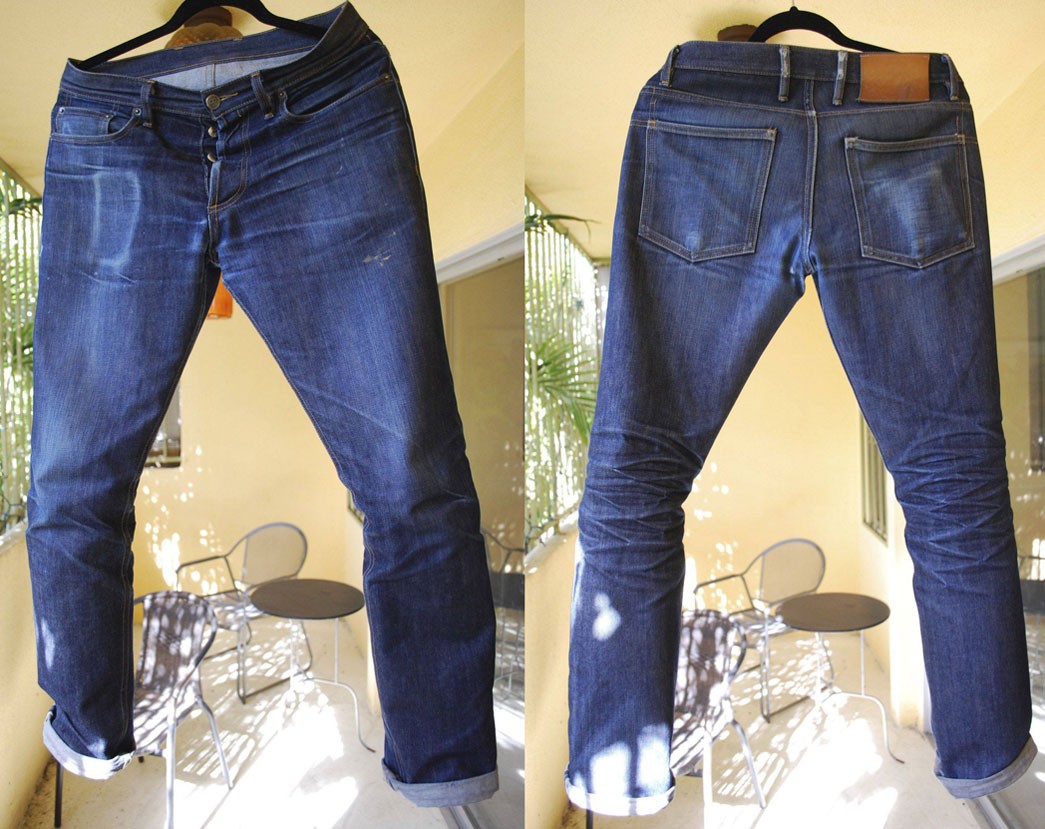
My Jeans at the 14 month mark.
I also really like them! I probably could have squeezed more wear out of each pair of Levi’s had I repaired them and savored every moment, but I simply didn’t care enough to make the effort. The Levi’s were my jeans, but the 3sixteens were My Jeans! The 3sixteens may not have been four times as durable as the mall jeans, but I cared about them more than four times as much. All of this talk about repairing, handwashing, and caring for your clothes doesn’t amount to a whole lot unless you are actually attached enough to the garment to follow through with it in practice.
So buy the good stuff, buy stuff that will last, and you are invested enough in to keep using it. When I made the decision to buy one pair of jeans instead of four, I instantly saved the planet over 5,000 gallons of water, saved myself money in the long run, made more room in my closet, and gave myself the enjoyment of having something nice.
If you’re at a loss for where to look to buy the good quality jeans, shoes, jackets, bags, etc. – KEEP READING THIS WEBSITE. Helping you find that stuff is literally all we do! Have a look at our picks for the best entry level raw denim jeans or pair of boots and prepare to dive down the rabbit hole.
10. Buy From Brands with Transparent Production Practices
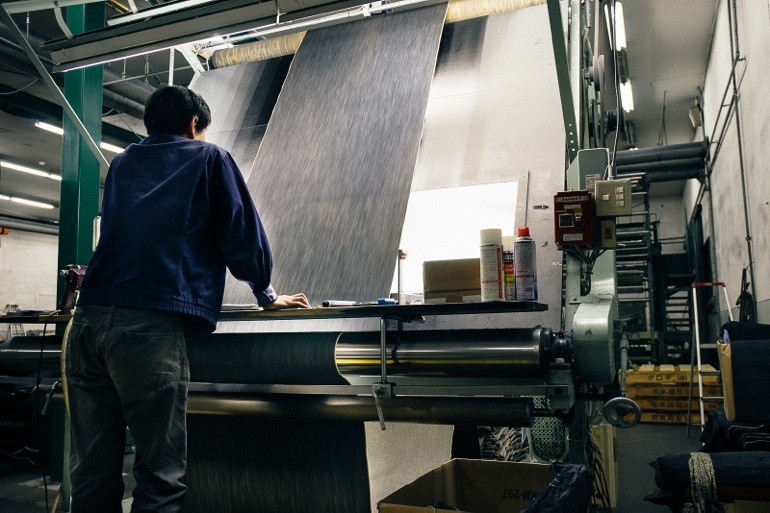
Kuroki Mills in Okayama, Japan. Image via 3sixteen.
Buying the good stuff, however, isn’t as easy as it sounds. Spending more will not always get you a better product. It can take time and effort to understand how a jean is sewn together, much less the global supply chain that produced it. And it can be difficult to know an item was locally and ethically sourced if the company refuses to tell you where it came from.
The only legal labelling requirement for garments sold in the United States is country of origin, fabric content, and care instructions. The brands that do it right, however, are often the first ones to tell you about it. 3sixteen, for example, source all of their denim from Kuroki Mills in Japan, so they went to Japan and documented the entire process for their customers (see it here). Truman Boot makes all of their footwear in house in a small workshop in Boulder and you can literally visit them and see the process for yourself. This philosophy is also central to our CO-OP products, we tell you every supplier, every machine, and the name of every single person who helped make the item, down to the tag printers.
Of course, just because a company tells you how they made something doesn’t necessarily mean what they made is of quality. But if you have that information, you as a consumer can make a more informed and better decision, and that is a very good thing.
11. Resell/Give Your Unwanted Clothes to People Who Can Use Them
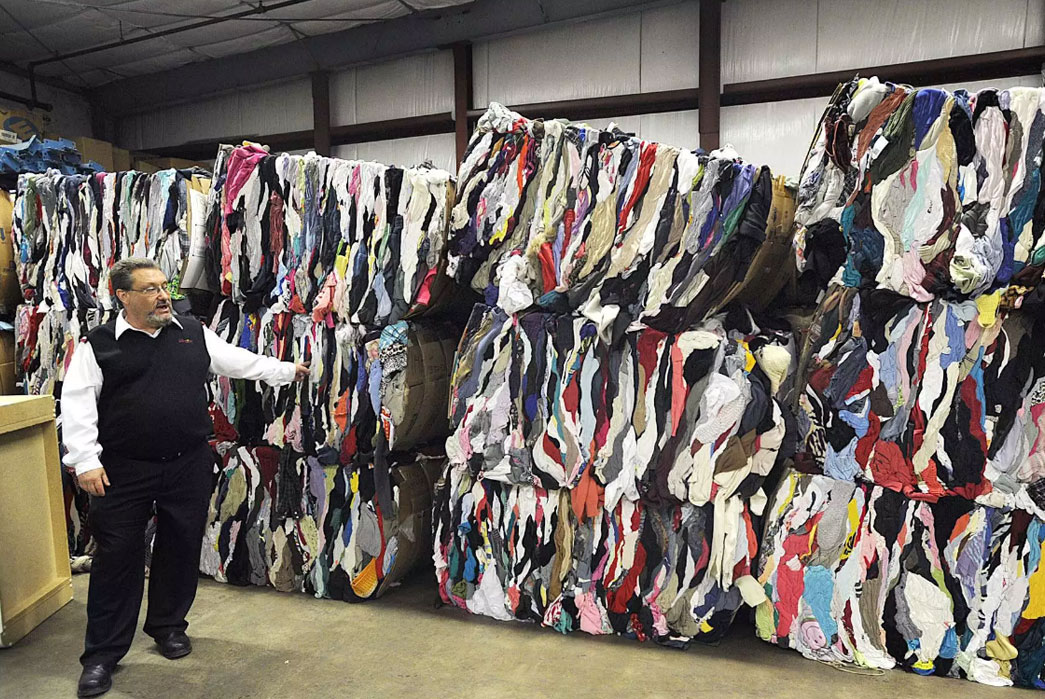
At a Salvation Army – bales of clothing destined for recycling (Jack Hanrahan, Erie Times-News)
I love my 3sixteens but if I wanted to ditch them tomorrow, I could sell them to another denim nerd online for about $50-$100. Try getting even 10% of what you paid for clothing at the mall five years later. Not only would I make some of my money back by reselling my jeans, it also keeps them in circulation in a way that donated clothing often does not.
We recently covered the sometimes dark afterlives of donated apparel and how what you give to your local Goodwill often finds its way to Africa and South Asia, where it floods markets, hurts local clothing and apparel manufacturers, and can end up in a landfill anyways. The best way you can part ways with your unwanted clothing is to give it to someone as nearby as possible who will keep using it for its intended purpose.
Giving to Goodwill or the Salvation Army is still better than throwing your clothes away, but if you still have things that you can’t sell on Grailed, eBay, or give to a friend, try looking for a shelter or charity in your hometown that can use it immediately.
The main takeaway here is that the clothing we consume has a real environmental cost that goes far beyond the price tag. What you choose or choose not to buy and how you maintain it can have an immense impact on those costs, both personally and in the world at large. Try to get the most use possible out of everything you buy and we’ll all get a lot more use out of the planet we live on.

